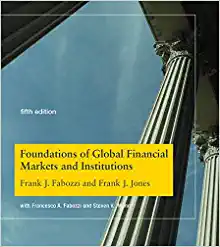Question
The government is likely to account for a significant portion of its subsidy burden for the current fiscal, including 20,000 crore on subsidizing fuel, in
The government is likely to account for a significant portion of its subsidy burden for the current fiscal, including 20,000 crore on subsidizing fuel, in 2019-20 to meet thefiscal deficit targetfor the year to 31 March. "We have to shift part of the overall subsidy bill to the next financial year. The petroleum subsidy bill is expected to exceed the budgeted target by 20,000 crore due to high crude oil prices and rupee depreciation, which cannot be footed this fiscal year," a government official said on condition of anonymity. The Modi government has allocated 2.9 trillion for various subsidies in the 2018-19 budget, including 24,933 crore for petroleum subsidy, which analysts say is an underestimation considering that fuel subsidies stood at 24,460 crore in 2017-18, when average crude oil prices were much lower.
The likelihood of the government meeting the fiscal deficit target of 3.3% of GDP will also depend on whether it achieves the budgeted revenue targets related to the goods and services tax, dividend income and disinvestment proceeds, as well as fund requirements for revised minimum support prices, the Ayushman Bharat scheme and bank recapitalization. "With the rise in crude oil prices and the depreciation of the rupee, gross under-recoveries of the oil marketing companies for the ongoing fiscal are estimated to exceed the budgetary allocation for fuel subsidies, exerting pressure on the overall fiscal deficit target."
While the budgeted growth in the centre's indirect taxes for FY19 was 19.2%, the realized growth during the first half of the fiscal was just 4.4%. This also compares adversely with the 23% growth in indirect tax revenues in the year-earlier period. Available information indicated the prospect of a slippage in the fiscal deficit target for FY19 because of an anticipated shortfall in the budgeted proceeds for disinvestment and indirect taxes, said D.K. Srivastava, chief policy adviser at EY India. "However, there is a likelihood of the central government exploring additional support from the RBI for the budget, so that any downward adjustment in the budgeted government expenditure may be avoided if the fiscal deficit targets are to be adhered to. Any reduction in budgeted expenditure, particularly budgeted capital expenditure, might adversely impact growth as private sector demand has not tangibly strengthened," he added. Finance minister Arun Jaitley has expressed confidence in meeting the fiscal deficit target without cutting capital expenditure. However, recent electoral reverses for the ruling Bharatiya Janata Party in assembly polls are expected to put additional pressure on the government to opt for populist measures.
A. Assess the reasons behind the possible widening of fiscal deficit in the article.
B. Finance Minister has assured to meet fiscal deficit target without cutting capital expenditure. What constitutes capital and revenue expenditure? How do these impact growth?
C. Illustrate the difference between fiscal deficit, primary deficit and revenue deficit. What are the implications of these deficits?
Step by Step Solution
There are 3 Steps involved in it
Step: 1

Get Instant Access to Expert-Tailored Solutions
See step-by-step solutions with expert insights and AI powered tools for academic success
Step: 2

Step: 3

Ace Your Homework with AI
Get the answers you need in no time with our AI-driven, step-by-step assistance
Get Started


